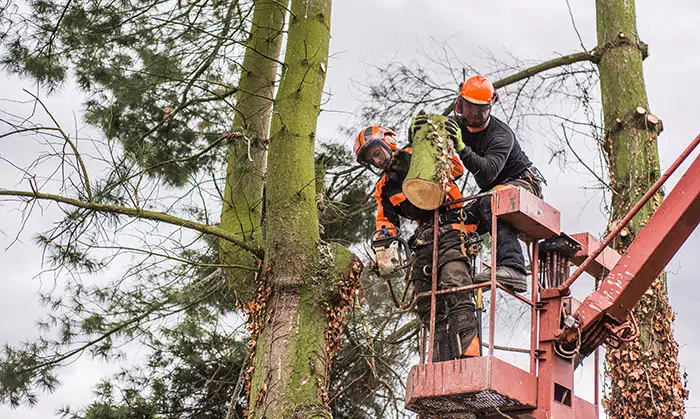Tree removal is sometimes a necessary part of property maintenance, whether for safety, aesthetics, or structural concerns. While trees provide shade, beauty, and value, certain locations on a property can make them problematic.
Over time, roots may interfere with foundations, branches may threaten power lines, or aging trees may pose a risk of falling. Understanding the most common areas where trees are removed helps homeowners and property managers make informed decisions and keep their spaces safe and functional.
Near Homes and Building Structures
Trees growing too close to homes can create multiple risks that often lead to removal.
- Roots may damage foundations, driveways, and underground plumbing systems.
- Branches can scrape roofs, siding, and windows, causing wear and tear over time.
- Fallen limbs during storms may lead to costly damage or injuries.
- Overhanging trees often drop leaves and debris into gutters, requiring constant cleaning.
Trees near structures are commonly removed to prevent long-term damage and reduce safety hazards.
Along Property Lines and Fences
Trees located on or near property boundaries often lead to disputes or complications.
- Branches that cross into a neighbor’s yard can lead to legal and maintenance issues.
- Roots may grow under fences, lifting or cracking concrete footings and panels.
- Trees planted too close to property lines can limit future landscaping options or privacy upgrades.
- Removal may be necessary to resolve boundary conflicts or prevent future damage.
Property lines are frequent removal zones, especially in suburban neighborhoods where space is limited.
Close to Driveways and Walkways
Trees growing along access points can pose safety risks and cause surface damage.
- Roots may lift and crack concrete, creating tripping hazards and uneven surfaces.
- Falling leaves, fruits, or sap can stain driveways and walkways or create slippery conditions.
- Low-hanging branches may interfere with vehicles, deliveries, or foot traffic.
- Regular pruning may no longer be enough, prompting full removal for convenience and safety.
Removing trees in these areas often improves access and reduces liability concerns for property owners.
Around Utility Lines and Poles
Trees interfering with power lines or underground utilities are top candidates for removal.
- Branches in contact with power lines create fire hazards and outage risks.
- Trees near underground lines may require removal before repairs or upgrades.
- Utility companies may request or require removal of problematic trees for public safety.
- Maintaining clearance zones helps prevent emergency situations and service interruptions.
Utility proximity is one of the most regulated and common reasons for tree removal on both residential and commercial properties.
In Poor Health or Hazard Zones
Sometimes trees are removed simply because they pose a safety threat due to their condition or location.
- Diseased or dying trees can become unstable and fall without warning.
- Trees growing in flood-prone areas or near steep slopes are more likely to collapse during storms.
- Dead trees become habitats for pests or become unsightly over time.
- Regular assessments by arborists help identify risk-prone trees that should be removed proactively.
High-risk zones are often prioritized for tree removal to protect people, pets, and property.
Knowing the most common locations for tree removal helps property owners anticipate issues and plan accordingly. Whether it’s clearing space near a structure, improving safety near utilities, or addressing a hazardous tree, professional tree removal is a strategic way to protect your home and preserve your landscape’s health and appearance.

